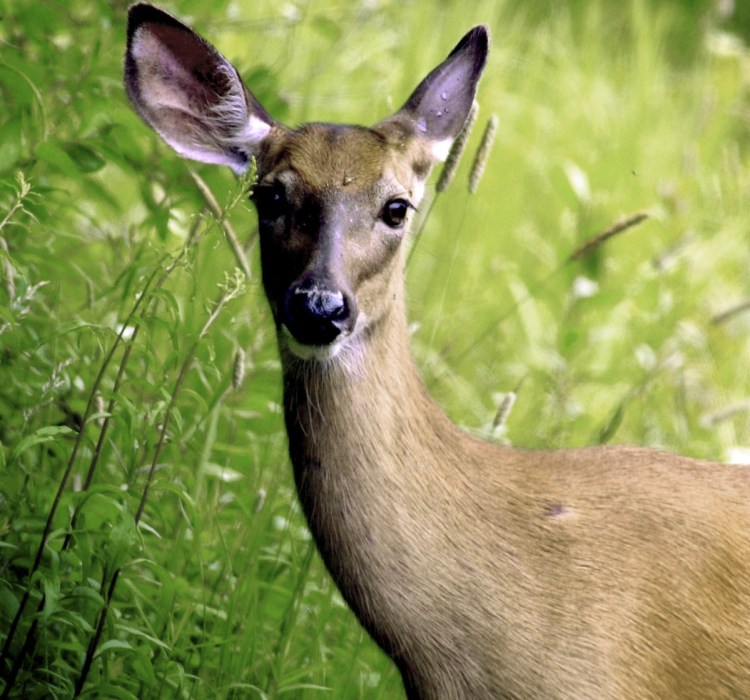The rut is on. Those words stir the blood of any whitetail enthusiast. It’s that magical time when normally wary whitetails drop their guard for a brief period and move about more during daylight.
But do you really know what the rut is, and how to tell when it has begun?
The rut is the mating season for white-tailed deer and includes all behavior associated with courtship and breeding. Thus, it actually begins when bucks first paw the earth and urinate into a bare patch of ground, leaving a scent message for any passing doe that they are ready, willing and able to breed. In our neck of the woods, this usually occurs around the first of October.
While a gradual decrease in the amount of daylight is the primary trigger, the aroma of a randy buck also prompts physiological changes in a doe that will ultimately lead to her readiness to breed. In the meantime, bucks must sort out their dominance hierarchy to determine who will win rights to the most does, a process that begins with casual sparring and shoving matches. Later, as the intensity of rutting behavior increases, these contests become more serious and may result in all out combat, and on rare occasions, a fight to the death.
To a hunter and a biologist, peak rut means two very different things. To a biologist, it is peak breeding, when the majority of adult does will successfully mate with a buck. It is a relatively narrow window of about a week to 10 days. Though peak breeding dates can vary between geographic areas, they occur at roughly the same time every year for any given area, regardless of weather, temperature, moon phase, moon period or the width of a woolly bear caterpillar’s bands.
The peak rut time in Maine this fall is likely to be Nov. 17-23 for mature does, and a week later for yearling does. However, it’s important to know that breeding occurs on a continuum. Most does will breed during the peak period, but there will be a declining number bred earlier and later. Some does will come into estrus as much as three or four weeks outside this peak window. As a result, there is also rutting behavior like seeking, chasing and tending well outside this window, but to a lesser degree.
These are the activities most hunters associate with the rut. And this period when bucks are on their feet and moving about during daylight hours, sometimes recklessly, peaks about a week before the peak breeding period. By the time peak breeding rolls around, deer can seem quite scarce as they’ve paired up and gone off to some secluded area for 24-48 hours. Hunters sometimes refer to this phase as the lockdown.
There are several reliable signs to the progress of the rut. As noted, bucks create scrapes as a sort of signpost or deer dating service. They will periodically tend at least some of these scrapes, until enough does come into estrus that they no longer need to, or have the time. So watch for when scrapes suddenly go untended.
Another sign is what I call rut orphans. Once a buck or bucks begin tending a hot doe, she will become separated from her offspring. Without their mother’s guidance, these temporarily orphaned youngsters often get themselves into trouble by being careless. Those who hunt fields or food plots are probably familiar with this phenomenon as fawns, most often male fawns, are typically the first to step out into the open.
Perhaps the best signs, though are the ones you see at night. The clocks have changed and now it’s dark as you’re driving home from work. You take the same route you always do, but one evening you catch a flash of brown in the headlights as a doe races across the blacktop. Slow down and wait. A moment later, a huge buck trots into the open, nose to the ground. He pauses to stare defiantly in your direction, as if offended by your intrusion, before continuing after the object of his desire. Yes, the rut is on.
Bob Humphrey is a freelance writer, registered Maine guide and certified wildlife biologist who lives in Pownal. He can be reached at:
bhhunt@maine.rr.com
Send questions/comments to the editors.



Success. Please wait for the page to reload. If the page does not reload within 5 seconds, please refresh the page.
Enter your email and password to access comments.
Hi, to comment on stories you must . This profile is in addition to your subscription and website login.
Already have a commenting profile? .
Invalid username/password.
Please check your email to confirm and complete your registration.
Only subscribers are eligible to post comments. Please subscribe or login first for digital access. Here’s why.
Use the form below to reset your password. When you've submitted your account email, we will send an email with a reset code.